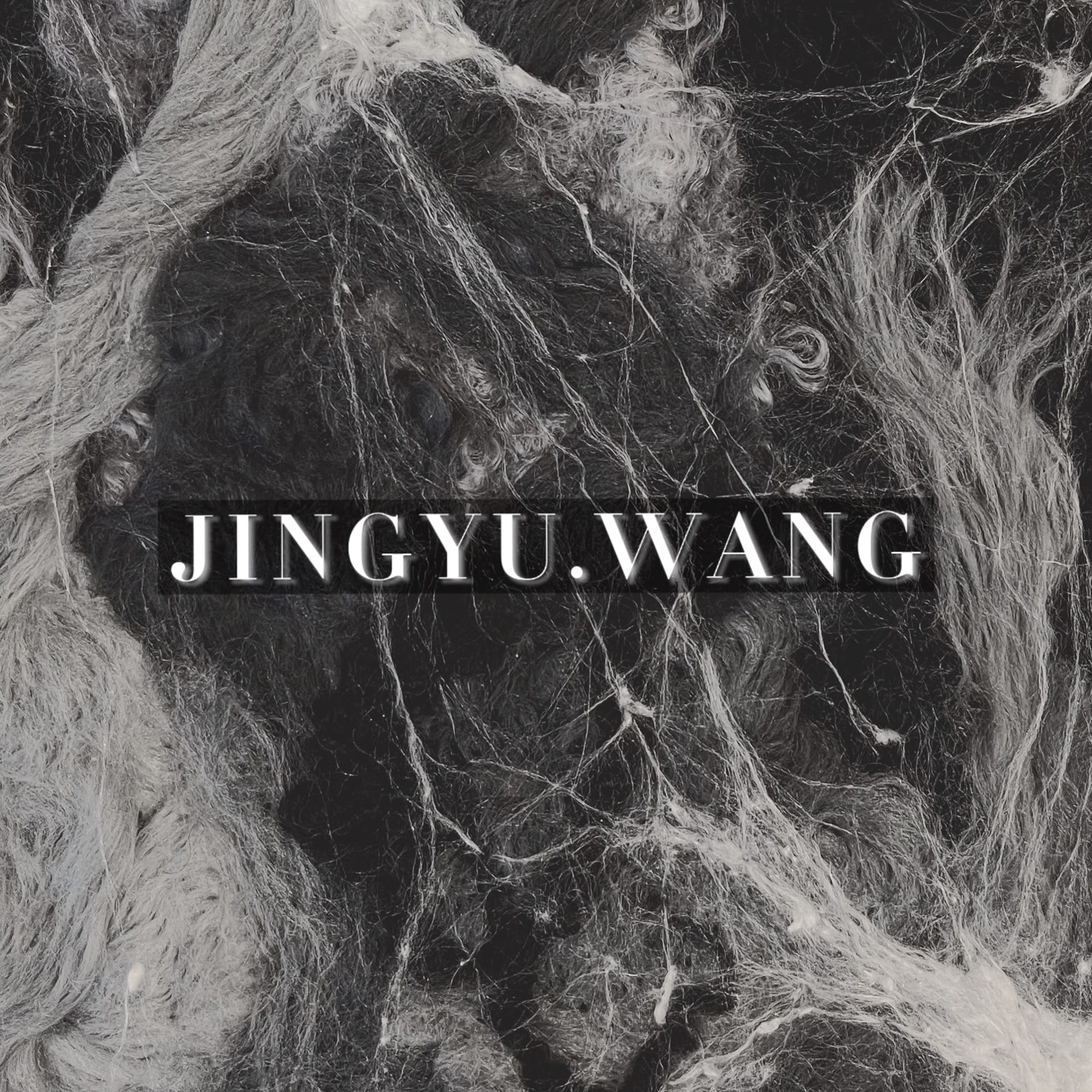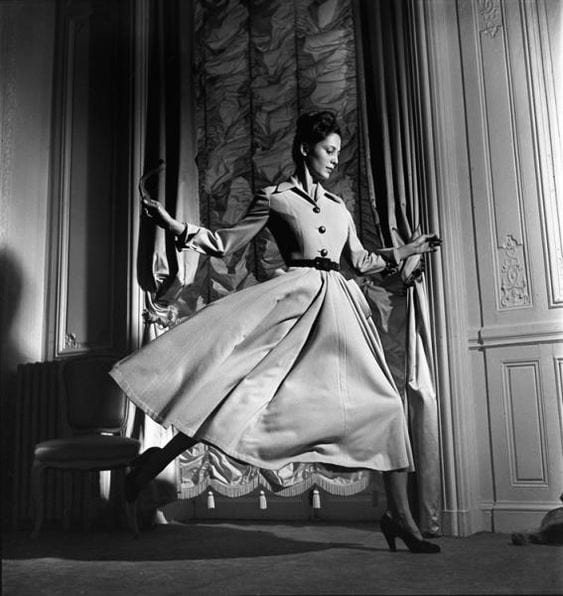Image Source: http://emilesavitry.com/site/galerie.php?the_id=1#ad-image-97
Choice 1: The photograph published in the October 1947 edition “Le Jardin des Modes” in Paris featured the so-called “Bonbon” dress designed by Christian Dior. The dress was also one of the looks released in the fall-winter 1947 Dior couture collection for women. The design of the dress signifies Christian Dior’s greatest evolution made in the fashion history – his revolutionary New Look silhouette. The New Look was first invented by Christian Dior on February 12, 1947 – two years after World War II – and was debuted because of its clearly articulated feminine silhouette. Drastically different from the sleek silhouette and loosening styles offered in the 20s and 30s, the New Look emphasizes features such as rounded shoulders, a tightly fitted (corseted) waist, and a full length A-line skirt with often padded hips. Much so resembled by the dress worn by the model in the photograph, the New Look appalled many designers in the same time period such as Coco Chanel who viewed such design elements as unhuman and abhorring for woman. Because in many of those designer’s mind, a very fitted bodice and a full skirt would not ideally liberate a woman or give her the comfort as same as what a pair of pants could do. However, this photograph very interestingly shows a female model in action, much more different from other Dior’s campaigns which had models standing in really feminine poses. The photograph shows a new level of freedom and liberation female gender could achieve with Dior’s New Look, or what the New Look has symbolized, by enabling the model to do as the same much as she can with pants on without losing any of her femininity. The woman in Dior’s New Look seems elegant, womanly, petite, yet free and lively. The concept behind the New Look and this photograph also resonates with my personal design work, as my work also have a very feminine perspective inside that often draws comment such as “this looks like it’s for a goddess,” “this is exclusively for woman or female.” However, I think the only way to achieve the ultimate female power or gender equality in fashion is by realizing the difference between the two bodies. And to appreciate the curvature of a feminine form as much as the vigorousness of the masculine form, and to emphasize each in a way that only each gender could wear it to produce the beauty that the other cannot reproduce. To remain feminine is the only way for female to be free in the gender battle of fashion, but not to be more like man or to wear man’s fashion.
Image Source:https://www.vogue.com/article/most-expensive-movie-dresses
Choice 2: This image extracted from Vogue’s Everett Collection is originally taken from Audrey Hepburn’s film Breakfast at Tiffany’s. The dress worn by Hepburn, designed by Hubert de Givenchy in 1961, was one of the earliest pieces in the film industry that shows collaborations between a designer and an actor or actress in a way that the designer would made clothing specifically for the film’s role. The dress also got its significance by creating such fashion statement saying a “little black dress” being an essential wardrobe piece that every woman should own in her lifetime. Although the term ”Little Black Dress” was not invented by Givenchy but rather Chanel many decades earlier, the credit of its gaining popularity belonged to Givenchy, and the phenomenon of Hepburn’s image of the Givenchy black dress became so famous was indeed helped by the upgrowing film industry. People started to look for celebrities and film stars for style inspiration and trend predictions. The dress, made with Italian satin, caught my eye also because of its fitted silhouette throughout. I think it’s very interesting and worth to analyze because of how it differs greatly from other designers in that period, even Dior and Chanel – one who provided exaggerated A-line skirt and one who designed looser, more comfortable and casual clothes for women – but yet still achieve a great success with this level of femininity and formality presented in his work. The dress is certainly a gown, but worn for a breakfast occasion with such limited accessories – only a pair of gloves, simple black low heels and some pearl jewelries – is also contradicting but charming. Almost saying a message “Less is more.” The style also resonates with my personal design, not only through material choices – which I favor satin, silk and other sheen fabric that represents femininity as well – but also the body –embracing silhouette that emphasize a simplified, elongated feminine curve. This simple elegance presents in this photograph is the ultimate reason that draws me into study more about the designer and the reason behind his design.





